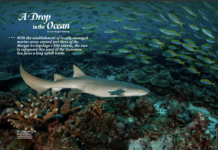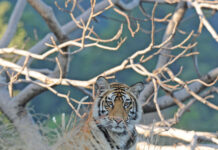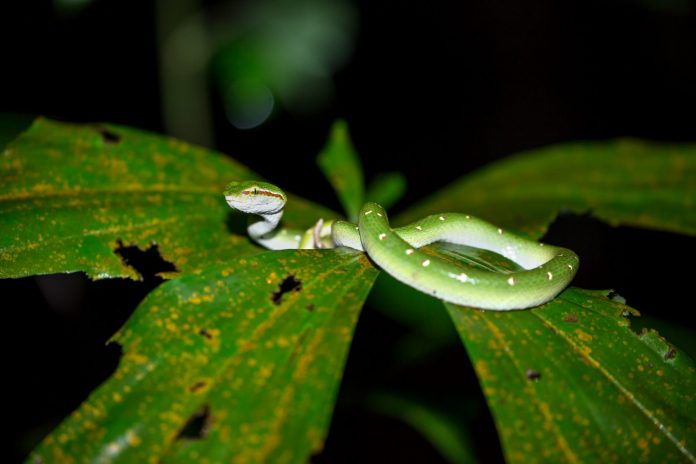
The wonderful and fascinating snakes of an island nation
By Mary-Ruth Low
Photos Justin Ong
At any mention the word “snake”, you might think of Nagini in Harry Potter, the Sand Snakes in Game of Thrones, Samuel L. Jackson’s Snakes on a Plane, Anaconda featuring Jennifer Lopez, the deceitful serpent in the Garden of Eden, or Kaa in Rudyard Kipling’s Jungle Book.
To add to that fictional and mythical list of snakes, animal documentaries appear to be following a similar vein, with features such as The Most Extreme: Deadly Snakes (Animal Planet) and the recent Eaten Alive (Discovery Channel), where a man supposedly allows himself to be eaten alive by an anaconda!
Hold that thought and now think of the cosmopolitan island nation of Singapore with its impressive skyscrapers, litter-free streets, manicured roadside trees – and 72 fascinating snake species! To the uninitiated, you’d expect a number like that to belong to the more relevant tropical rainforests of Borneo.
Singapore lies one degree north of the equator and is situated within the Sundaland biodiversity hotspot. The main island was originally 578 square kilometres in size but has increased to 710 square kilometres through extensive land reclamation. Unfortunately, less than one percent of its primary forest remains, with mature secondary forest making up the majority of the two main forest strongholds: Bukit Timah and the Central Catchment Nature Reserve.
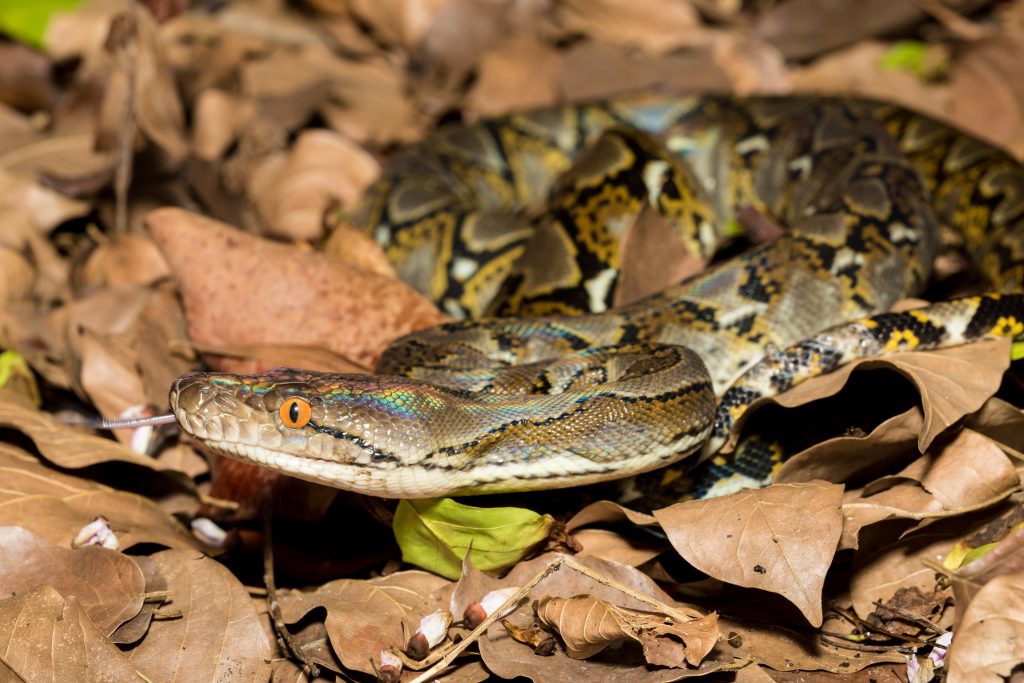
In recent years, Singaporeans have begun to be more aware and more appreciative of the wildlife that has somehow survived and thrived despite all the urbanisation. Smooth-coated otters, oriental pied hornbills and pangolins have been the proud features in regional documentaries, and rightly so. Snakes, however, tend to go relatively unnoticed, and people express surprise when they find out about the high diversity of snakes on the island.
So, should we then not all snake-proof our homes? After all, global statistics say 90,000 deaths are caused by snakebite each year! There is no doubt that snakes can be dangerous and even cause fatalities. Highly venomous snakes are usually found in the two families Elapidae and Viperidae. Cobras and kraits, which have short, hollow front fangs, belong to the former, whereas the latter consists of pit vipers and rattlesnakes, which have retractable fangs that fold neatly into the roof of the mouth.
Seven of these highly venomous species occur in Singapore: the king cobra (Ophiophagus hannah), equatorial spitting cobra (Naja sumatrana), Malayan blue coral snake (Calliophis bivirgata), Malayan banded coral snake (Calliophis intestinalis), banded krait (Bungarus fasciatus), Wagler’s pit viper (Tropidolaemus wagleri) and mangrove pit viper (Trimeresurus purpureomaculatus). Apart from the Wagler’s pit viper and the equatorial spitting cobra, they are relatively uncommon in the wild. You’d be lucky to spot one!
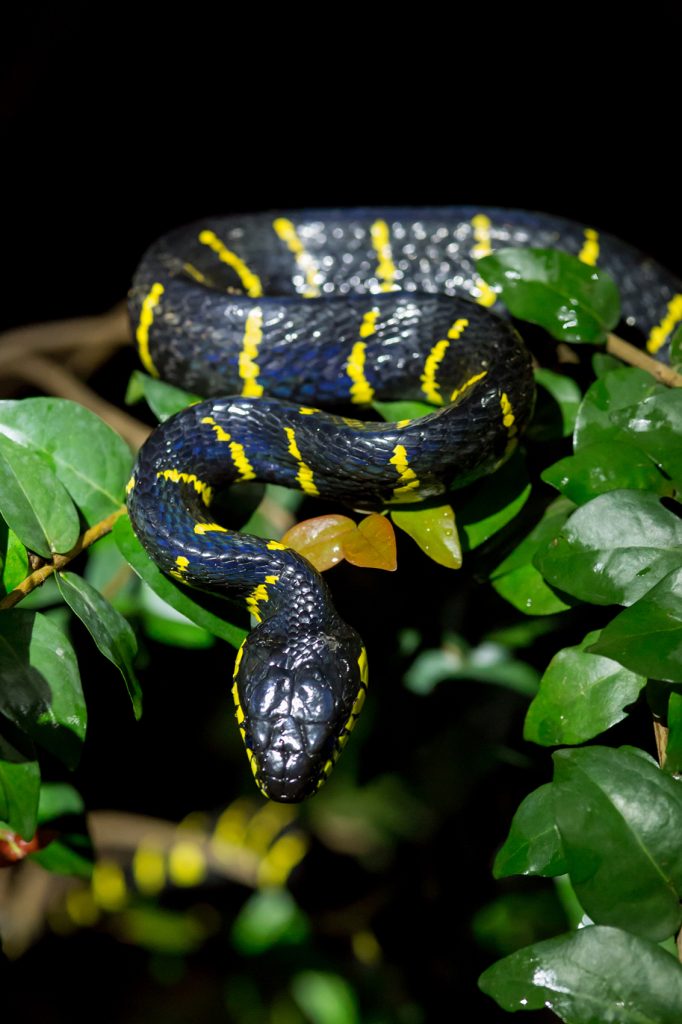
So what about the 90,000 deaths? One should bear in mind that the majority of regional snakebite deaths occur in rural areas, where people may be used to walking around barefoot or in slippers. In most snakebite cases, the animal is accidentally trodden upon and the person gets bitten as an instinctual defensive response, rather than a reactive one.
It is highly unlikely that any of the above scenarios would happen in Singapore. Instead, you may encounter a brilliantly green slender oriental whip snake (Ahaetulla prasina) or painted bronzeback (Dendrelaphis pictus) while jogging in your neighbourhood park, perhaps or a paradise tree snake (Chrysopelea paradisi) gliding from tree to tree. Take a short hike through the nature reserve and you might witness the beautiful black and yellow bands of the gold-ringed cat snake (Boiga dendrophila) coiled around a tree branch, waiting for nightfall to prey on a sleeping meal.
Paradise tree snakes always make a good story. ACRES (Animal Concerns and Research Education Society), which runs a local wildlife rescue team, have found paradise tree snakes trapped on the 11th storey of residential flats on more than one occasion. Could that particular height be optimal for tree-to-tree gliding? Do the snakes become trapped because they can’t locate a suitable “destination” tree? These are intriguing scientific questions worth looking into!
Someone also once sent me a photo of a paradise tree snake carcass she had found in her kettle – boiled and discoloured. Apparently, the snake had decided the kettle would make a nice hidey-hole for the evening; little did it realise what would befall it the next morning.
Even in Singapore’s densely urban areas, house wolf snakes (Lycodon capucinus) are so named because they are often found in houses. Reticulated pythons (Malayopython reticulatus) are also a fairly common sight, a nocturnal predator on the hunt for rats and other warm-blooded prey.
And then there are the mud snakes, such as the dog-faced water snake (Cerberus schneiderii) and the crab-eating mud snake (Fordonia leucobalia), which feeds on tree-climbing crabs by tearing off their limbs one by one. Of the family Homalopsidae, they are relatively common in mangrove swamps.
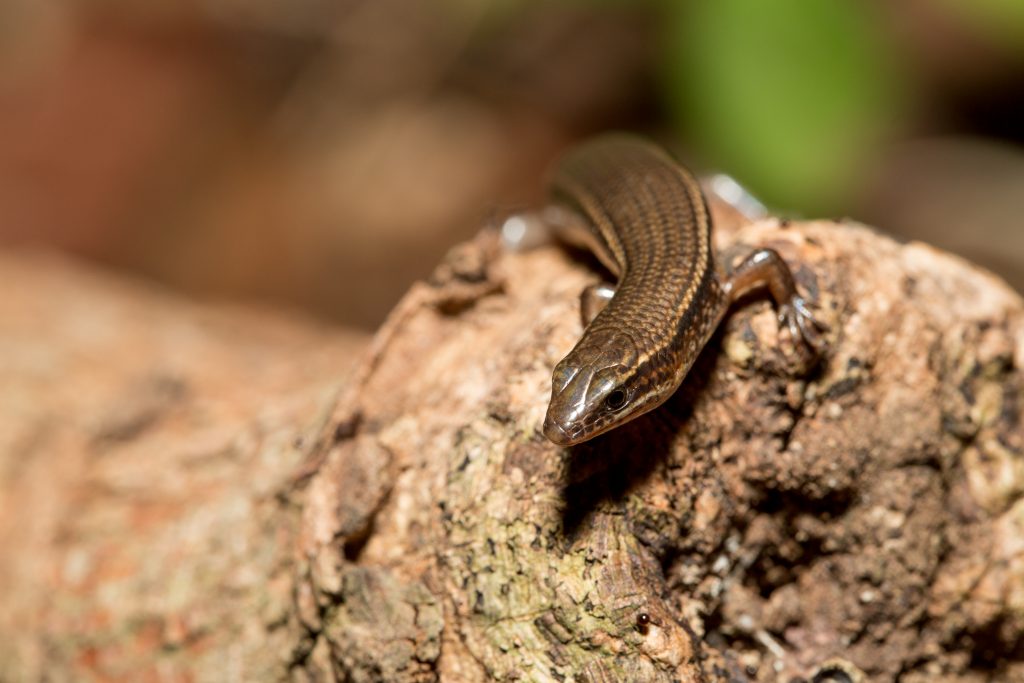
Just a few months ago, government scientists surveying the only remaining patch of freshwater swamp forest in Singapore’s Central Catchment Nature Reserve discovered a new record – never before had this species been listed in the island’s natural history records. Two blackwater mud snakes (Phytolopsis punctata) had accidentally lodged themselves in a fish trap, presumably because the trap served as a buffet spread, as it were.
Indeed, one can’t help but wonder what else this tiny tropical island, dubbed the “Little Red Dot”, has to offer. That said, perhaps we should acquaint ourselves with what we do know. There are guidebooks, websites and even a smartphone app that are available to help in snake species identification. Be familiar with those that are venomous and those that are harmless. And the next time you encounter a snake along your jogging path, stay calm and give it a respectable distance, but also count yourself privileged to have sighted one of these fascinating creatures.
For more stories and photos, check out Asian Geographic Issue 113.





